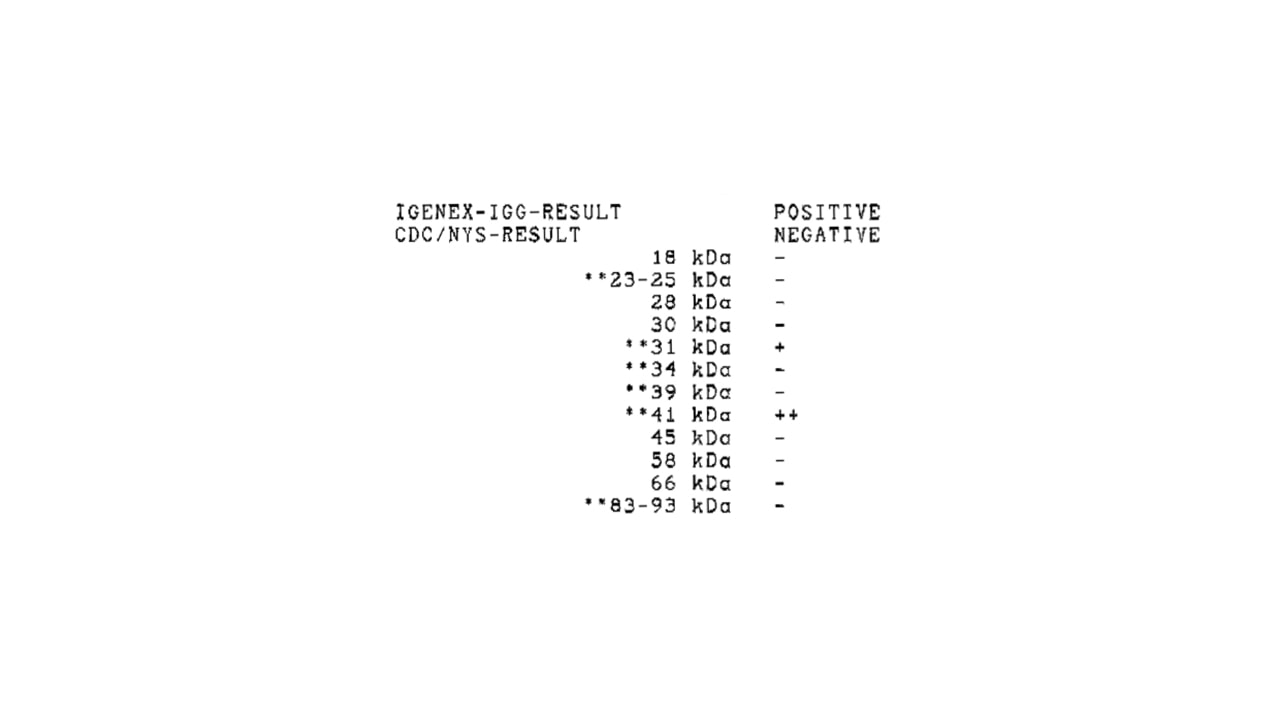The Western Blot Test
The Western Blot Test is a Commonly Used Method of Using Antibodies to Test for Lyme Disease
It must be made known that you can be tested for Lyme Disease countless times, yielding continuous negative results but still have full blown Lyme Disease. The reason is that the Western Blot Test only tests our body's antibody response to the Lyme Bacteria. The Western Blot doesn't actually test the bacteria itself.
Since the bacteria is capable of hiding from the immune system in a cyst form or with the protection of a biofilm it generates, the antibodies needed to yield positive Lyme Disease results may not exist. Spirochetes can also drill themselves into our white blood cells, our antibody producers, and inhibit their ability to produce antibodies according to Dr. Mercola.
The Western Blot test unfortunately must go through a middle man(antibodies) to determine if Lyme Disease is present. Results are at the mercy of the bacteria's ability to hide. Negative test results should never be taken in their entirety if symptoms of Lyme Disease are present and all other major illness have been ruled out.
The Western Blot Test Consists of Two Subdivided Results: IgG & IgMIgG (Immunoglobulin G) and IgM (Immunoglobulin M) are both antibodies the body produces in response to an infection. Whether IgM or IgG are present on lab results can help indicate whether an infection is recently active (IgM) or has been active for a while or long since been eradicated by the immune system (IgG).
On the Western Blot's results, you'll find a list 12 different bands (i.e., antigens). These antigens are specific to certain parts of the Lyme bacteria, such as proteins from the Lyme spirochete's flagella.
|
|
IgM Results
IgM is considered positive differently by the Centers For Disease Control and Prevention (CDC) and IgeneX. IGeneX considers an IgM lab result positive if 2 or more of the following bands are present:
- **23-25 kDa
- **31 kDa
- **34 kDa
- **39 kDa
- **41 kDa
- **83-93 kDa
The Centers For Disease Control and Prevention (CDC) considers an IgM lab result positive if 2 of the following bands are present:
- **23-25 kDa
- **39 kDa
- **41 kDa
|
|
IgG ResultsIgG is also considered positive differently by the Centers For Disease Control and Prevention (CDC) and IgeneX. IGeneX considers an IgG lab result positive if 2 or more of the following bands are present:
|
The Centers For Disease Control and Prevention (CDC) considers an IgM lab result positive if 5 of the following bands are present:
- 18 kDa
- **23-25 kDa
- 28 kDa
- 30 kDa
- **39 kDa
- **41 kDa
- 45 kDa
- 58 kDa
- 66 kDa
- **83-93 kDa
General Lab Result Interpretations
- Positive results for bands 31 kDa and/or 34 kDa may be present after Lyme Disease vaccination in an uninfected person
- It's been said that when band 31 kDa is positive, it's an indication of being infected for at least a year
Resources
- Bureau of Epidemiology. “Explanation of Lyme Disease Laboratory Testing.” Utah Department of Health, Apr. 2010, health.utah.gov/epi/diseases/lyme_disease/lab_testing_explanation.pdf.
- IGeneX, Inc. Lyme Disease Western Blot
- Wordnetweb.princeton.edu/perl/webwn
Disclaimer: The information shown on this page is not intended to diagnose, prevent, treat or cure any illness. Determination of your results should be discussed with your doctor. Diagnosis should not be based on laboratory results alone. Results should be interpreted in conjunction with clinical symptoms and patient history.
Also on Tired of Lyme
Refresh
Refresh
Subscribe to Tired of lyme!
Subscribe to Tired of Lyme's mailing list and get notified of new articles!







Comments